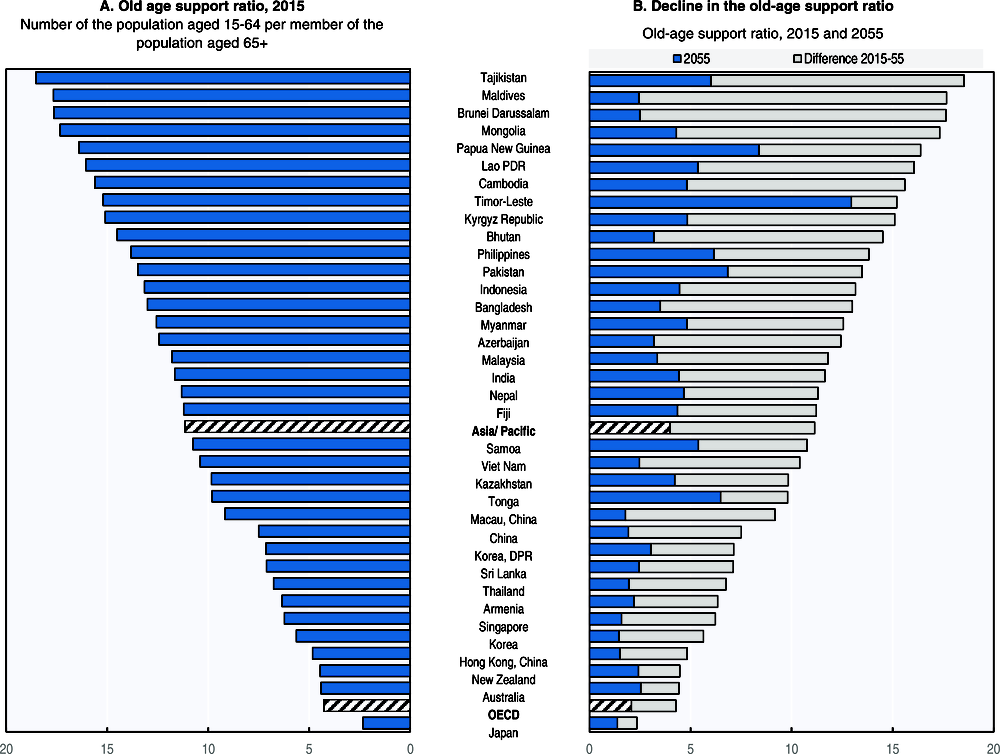Old-age support ratio
In 2015, countries in the Asia/Pacific region on average had eleven people of working age for every person over 65 (Figure 3.13.A). This is more than twice as high as the OECD’s average. Tajikistan, Maldives, Brunei Darussalam and Mongolia top the list with at least 17 working-age persons per one person of pension age: a stark contrast to Japan’s 2:3 ratio. Within the Asia/Pacific region, OECD countries such as Korea, Japan, Australia and New Zealand have the smallest old-age support ratios compared with non-OECD countries. In these countries life expectancy is high (Figure 6.1), while fertility rates are low, particularly in Japan and Korea (Figure 3.4).
Old-age support ratios are projected to more than halve by 2055 (Figure 3.13.B), and the Maldives, Mongolia and Brunei Darussalam are expected to see the biggest declines. OECD Asia/Pacific countries already have low old-age support ratios and these will decline further, in particular in Korea, from over 5 in 2015 to around 1.5 persons of working age to 1 senior citizen in 2055. Although this decline is extremely rapid there are other economies in the region who will also experience rapidly ageing societies. For example, the old-age support ration in Viet Nam will decrease from 10.4 in 2015 to 2.5 in 2055. In China the old-age support ratio is projected to fall to a low level of 1.9 by 2055, just below the OECD average.
The upward trend in elderly population stems from a rise in life expectancy due to improved health and declining birth rates. Underlying projected demographic trends do differ across countries (Figure 3.14), but the proportion of people aged 65 and over is estimated to at least treble in most economies between 2015 and 2050. By 2050 it is estimated that at least 20% of the population win Asia/Pacific economies will be aged 65 or older. By 2050 over 36% of the population in Japan is estimated to 65 or older, the highest proportion of all countries in the region.
There are economic and social implications of demographic change. A low old-age support ratio provides some indication of the dependency burden on the working population, as it is assumed that the economically active proportion of the population will need to provide health, education, pension, and social security benefits for the inactive population, either directly through family support mechanisms or indirectly through taxation.
The “old-age support ratio” relates the number of individuals aged 15 to 64 (working age) to the population aged 65 and over (those of “pension age”). All ratios are presented as the number of working age (15-64) people per one non-active person. The old-age support ratio thus provides a rough indicator of the number of active people who potentially are economically and socially supporting elderly people. It also gives a broad indication of the age structure of the population. Changes in the support ratio depend on mortality and fertility rates and, to a much lesser degree, on net migration.
Data come from the United Nations’ World Population Prospects online database (2015, http://esa.un.org/wpp/unpp/panel_population.htm). The projections for population aged 65 used in this section are based on the “medium variant” population projections.


